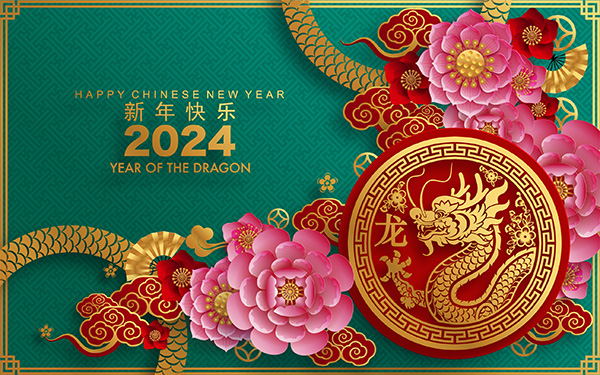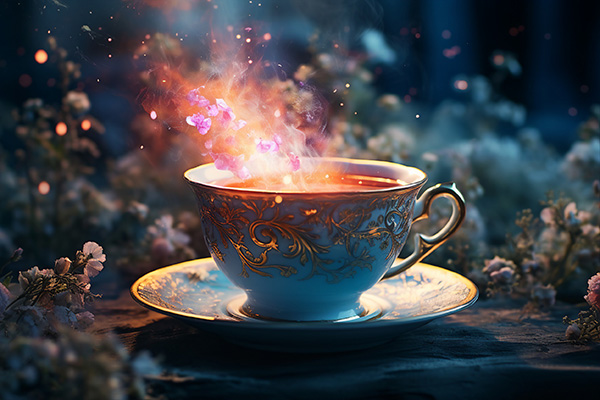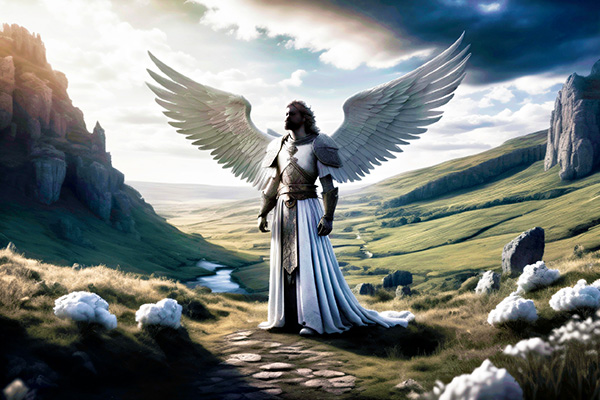spiritual traditions
Astrology Forecast February 5 – 11, 2024
 Mercury moves into Aquarius today, challenging us to think differently for the next few weeks. Breaking out of old molds and thought processes will be the challenge as the rulin planet of communication, intellect, and the mind moves through this electric sign.
Mercury moves into Aquarius today, challenging us to think differently for the next few weeks. Breaking out of old molds and thought processes will be the challenge as the rulin planet of communication, intellect, and the mind moves through this electric sign.
Our most productive days of the week will be tomorrow and Wednesday as the Moon marches through Capricorn, so get your to-do list completed before the fireworks and celebrations begin, as this week marks the beginning of the Chinese New Year 2024.
This year we celebrate the Year of the Dragon, more specifically, Wood Dragon. An Aquarius New Moon occurs on Friday, February 9th, which officially kicks off Chinese New Year on February 10th, lasting until January 28th, 2025.
The Year of the Dragon is any esteemed year in Chinese culture, as it is associated with strength, prosperity, and good fortune. In the Chinese zodiac, each year is associated with one of the twelve animal signs, and the Dragon is the only mythical creature in the cycle. People born in the Year of the Dragon are believed to inherit the dragon’s characteristics, which include intelligence, ambition, courage, and a strong sense of justice. Continue reading
A Beginner’s Guide To Tasseography
 Tasseography is the ancient, yet little known, art of tea-leaf divination. As a little girl in the 1960s, I was fascinated to learn that the patterns of tea leaves at the bottom of my teacup had special meanings, so much so that I asked my mother never to use the tea strainer again!
Tasseography is the ancient, yet little known, art of tea-leaf divination. As a little girl in the 1960s, I was fascinated to learn that the patterns of tea leaves at the bottom of my teacup had special meanings, so much so that I asked my mother never to use the tea strainer again!
Tasseography, also known as tasseomancy or tealeaf reading, is a form of divination or fortune-telling that involves interpreting patterns formed by tea leaves or coffee grounds left in a cup. The practice has ancient roots and can be traced back to various cultures and regions, but it originated in ancient China, where tea was first cultivated.
Tasseography also has ties to Middle Eastern cultures, particularly in the Ottoman Empire. The practice spread through trade routes and cultural exchanges. In the Middle East, coffee grounds were often used for divination, and the leftover grounds would be interpreted for insights into the future.
Tasseography gained popularity in Europe in the 17th century, particularly during the Victorian era when tea became a fashionable beverage. It is also associated with the Romani people, who incorporated tea leaf reading into their traditions. As the Roma traveled and interacted with different cultures, the practice spread.
Unstuck Your Life With A New Spiritual Practice
 One of the most transformative things we can do in life is to step out of our comfort zones and infuse our lives with new vitality. As creatures of habit, we tend to get stuck in life with repetitive routines and recurring patterns that drain our energy and stifle our personal and spiritual growth.
One of the most transformative things we can do in life is to step out of our comfort zones and infuse our lives with new vitality. As creatures of habit, we tend to get stuck in life with repetitive routines and recurring patterns that drain our energy and stifle our personal and spiritual growth.
When conventional methods fall short, exploring spiritual or esoteric practices can breathe fresh air into our lives and help us break free from the shackles of monotony.
Feeling stagnant, experiencing a lack of fulfillment, or longing for personal growth are all signs that it’s time to break free from a comfort zone, a soulless daily routine, or a recurring toxic pattern that no longer serves our highest good. These indicators often signal the need for change to invigorate or even reinvent our lives.
By adopting a new spiritual practice and delving into realms beyond the ordinary, we embark on a new journey of self-discovery and soul expansion that unlocks our hidden potential and transforms our destiny. Exploring esoteric and occult traditions offers alternative perspectives and transformative experiences that can expand our consciousness and provide profound insights. It can uncover hidden knowledge and help us tap into higher realms of consciousness that enrich our lives.
Invoking Archangel Michael In Your Spiritual Practice
 Archangel Michael, the divine warrior and champion of truth and justice, is a powerful figure in many spiritual traditions. He is a prominent figure in Judaism, Christianity, Islam, the Baha’i Faith, and Neo-Paganism.
Archangel Michael, the divine warrior and champion of truth and justice, is a powerful figure in many spiritual traditions. He is a prominent figure in Judaism, Christianity, Islam, the Baha’i Faith, and Neo-Paganism.
His name in Hebrew means “Who is like the Lord?” and his title “Archangel” means “Prince of Angels.” Michael is the leader of the angelic realm and is known for his strength, courage, and protection. He fights for good, empowers the faithful, and accompanies the souls of the righteous to heaven.
He is typically depicted as a warrior, complete with sword and shield. He is also often shown defeating a dragon or other monstrous creature. In Christianity, he is specifically mentioned in the Book of Revelation as battling Satan.
In some depictions, he is shown holding scales. This is a reference to his position as guardian of the dead as their souls leave the earth. Just as the Roman god Mercury accompanied souls to the underworld, Michael is said to accompany the recently deceased on their journey to the other side.
Michael is a venerable spiritual figure and is often invoked in prayer, meditation, and other spiritual practices. Believers invoke his presence for protection, guidance, and spiritual strength.
The True Meaning Of Holiday Gifts
 While wrapping Christmas gifts for family and friends today, I thought about whether it is better to be on the giving or receiving end of presents during the holiday season?
While wrapping Christmas gifts for family and friends today, I thought about whether it is better to be on the giving or receiving end of presents during the holiday season?
In my childhood, receiving presents was undoubtedly the best! But my parents also taught me the importance of giving. They gave my sister and me a small allowance during the holidays to buy gifts for others. It was fun to shop for small items to give to our loved ones. With much anticipation, wetried to pick things that people would actually like and appreciate.
I therefore learned early on that while receiving gifts can be exciting and fun, giving them can be even more rewarding.
My parents were certainly on to something, because the value of giving has been scientifically proven to be more than just a sweet sentiment. For example, according to a study by the American Psychological Association, giving to others increases life expectancy by at least five years! Another study found that people who give to others experience lower blood pressure, less depression, and lower stress levels. In addition, giving to others can increase happiness and well-being. A Harvard Business School study found that giving money to someone else increased participants’ happiness more than spending it on themselves.
Navigating Loneliness During the Holidays
 The holiday season is traditionally portrayed as a time of togetherness, love, joy, and belonging. We are inundated with media images of families gathered around a festive table, friends celebrating, and communities coming together.
The holiday season is traditionally portrayed as a time of togetherness, love, joy, and belonging. We are inundated with media images of families gathered around a festive table, friends celebrating, and communities coming together.
Paradoxically, for many people, this time of year is instead filled with feelings of loneliness, isolation and disconnection.
The root cause is the societal stereotype and cultural assumption that everyone should be joyful, happy, and surrounded by loved ones during the holidays. If you’re not, for whatever reason, it can lead to feelings of inadequacy, isolation, and social failure.
Holiday loneliness is exacerbated by the stark contrast between our actual circumstances and the commercially driven, idealized versions of holiday gatherings and celebrations we see in advertisements, television shows, movies, and social media. This increases feelings of disconnection, low self-esteem, and even depression.
Loneliness during the holidays can have a significant impact on mental health. Feelings of isolation and disconnection during this time of year can exacerbate existing mental health issues and lead to the development of new ones. The constant reminders of togetherness and joy, combined with a lack of social connections and meaningful interactions, can increase feelings of loneliness, leading to emotional distress, feelings of emptiness and hopelessness, and a decline in overall well-being.
